Understanding how should you pass a fishing boat is essential for any boater—whether you’re an experienced mariner or just starting out. Not only is it a matter of boating etiquette, but it’s also a legal and safety concern. Failing to pass a fishing boat properly can result in property damage, injury, or conflict on the water. And perhaps just as importantly, it can disrupt someone’s day of fishing—which, for many, is sacred time on the water.
This guide explores the right way to pass fishing vessels, why it matters, and what every boater should know before approaching a boat that’s anchored, drifting, or trolling for a catch.
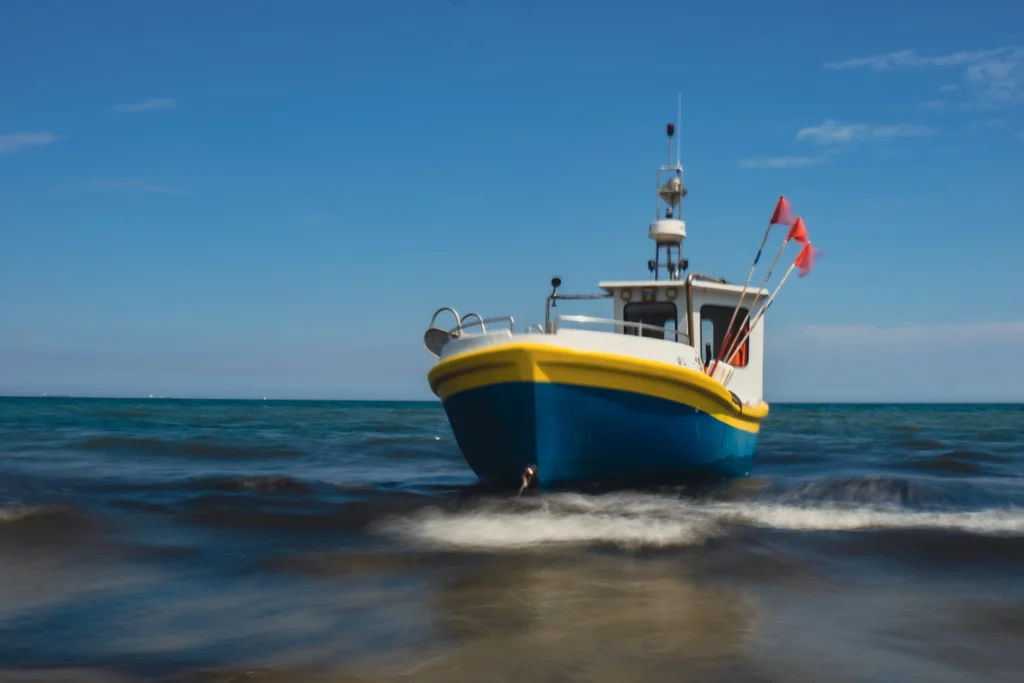
Understanding the Unique Nature of Fishing Boats
Fishing boats—whether they’re bass boats on a lake, center consoles on the coast, or trawlers offshore—behave differently than most recreational boats. They may be:
- Anchored while waiting on a bite
- Drifting with minimal steerage
- Trolling slowly using motors to pull bait through the water
- Deploying gear such as fishing lines, outriggers, or nets that extend beyond the boat’s physical footprint
This means they are often less maneuverable, less aware of surrounding noise, and more vulnerable to boat wake or disruption. Approaching without consideration can damage gear, scare away fish, or worse—cause a collision.
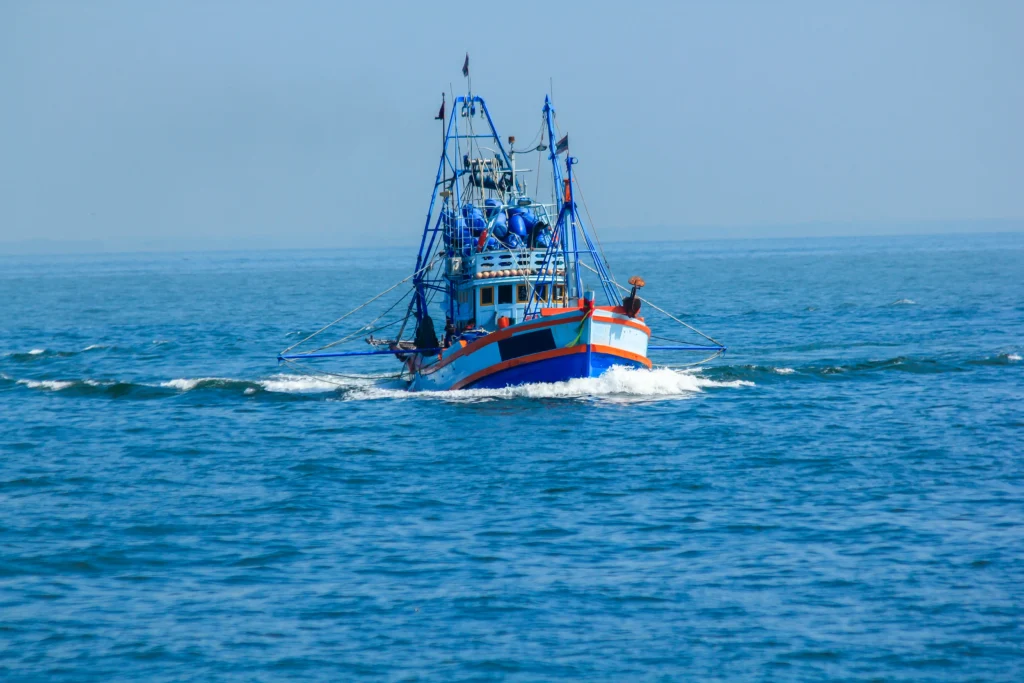
General Rule: Pass at a Slow, Safe Speed
The foundational rule in answering how should you pass a fishing boat is this: always slow down and reduce your wake. Even if there’s no speed limit posted, you are responsible for passing in a way that minimizes disruption and respects the other vessel’s activity.
High wakes can rock smaller boats, knock passengers off balance, and ruin a perfectly baited line. Especially in narrower waterways or calm conditions, a courteous pass is the difference between being a thoughtful boater and being “that guy” on the water.
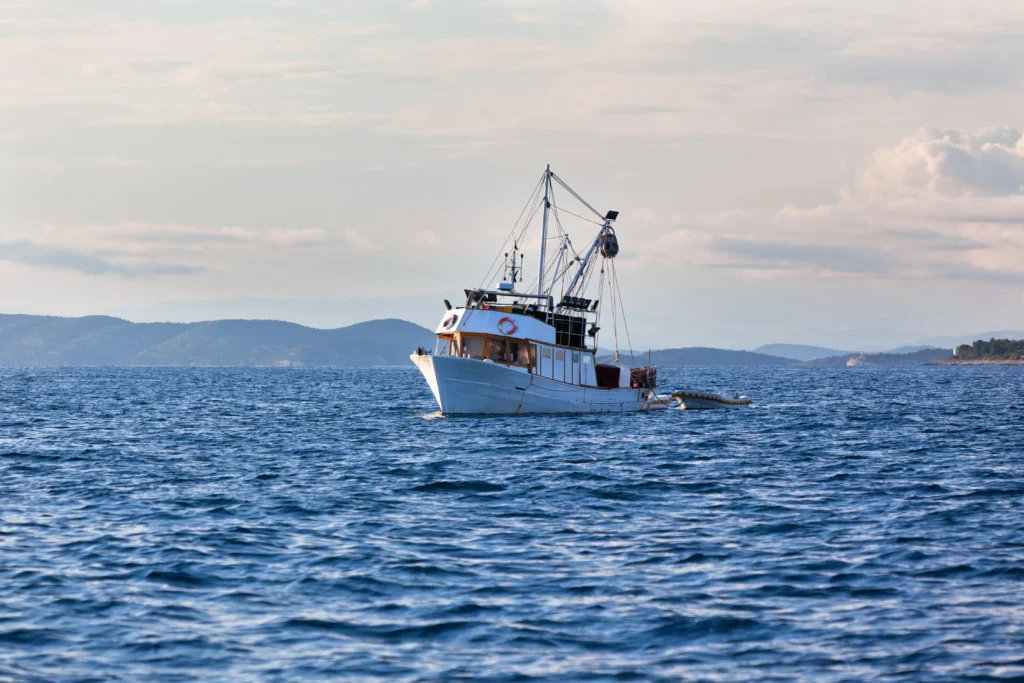
Which Side Should You Pass On?
When determining which side to pass a fishing boat, follow the “port-to-port” rule, which is the maritime equivalent of driving on the right side of the road.
- Port-to-port means your left side (port) should pass the other boat’s left side.
- This standard gives both boaters a predictable pattern to follow and helps avoid confusion or last-minute maneuvering.
However, this rule isn’t absolute. Situational awareness is key. If the fishing boat’s port side is clearly occupied with lines, gear, or another hazard, then you may need to pass on the starboard (right) side—but only if it’s safe and after making your intentions clear using sound signals or VHF radio.
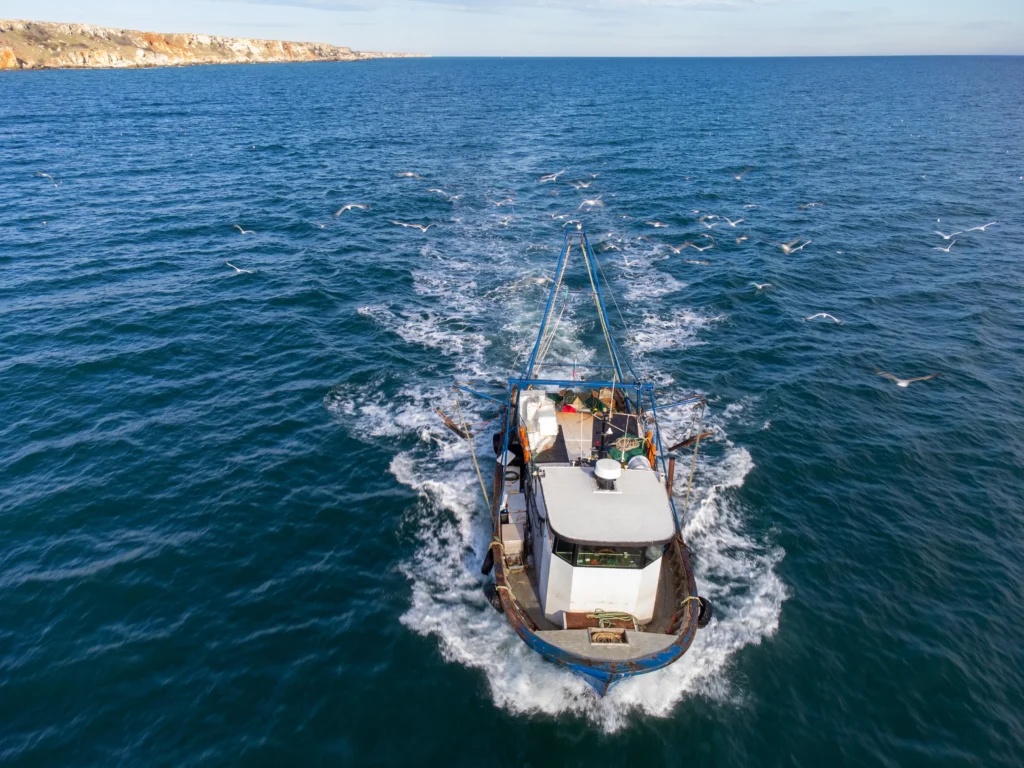
Use of Sound Signals
Boaters are encouraged to use sound signals to communicate intent—especially when passing close to another vessel. A short blast (1 second) of your horn means “I intend to pass you on my port side”, and two short blasts mean “I intend to pass you on your starboard side.”
If the fishing boat agrees with your intended pass, they can reply with the same signal. If not, they may sound five short blasts—the universal signal for danger or disagreement.
While not all recreational boaters use sound signals religiously, applying this standard improves clarity and prevents misunderstandings—particularly in congested areas.
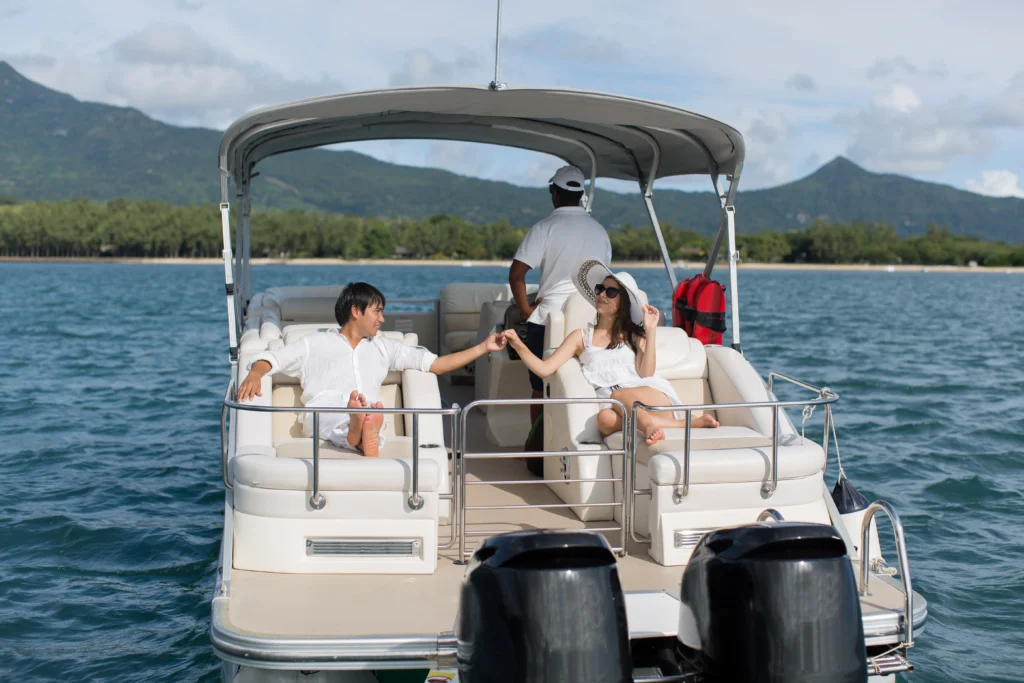
Know the Type of Fishing Activity
How you pass depends on what the fishing boat is doing:
1. Anchored Fishing Boats
If the boat is anchored, it’s not moving, and likely has lines in the water. This is the simplest situation in terms of movement, but requires a wide berth. You should pass as far away as practical, slow down significantly, and avoid creating any wake.
2. Drifting Boats
A boat that’s drifting can be unpredictable. The current or wind may slowly shift its orientation, and fishing lines might be trailing behind. Approach with caution, observe how the boat is moving, and pass with wide clearance on the side farthest from visible fishing lines.
3. Trolling Boats
Trolling boats often have multiple lines out, sometimes extending well behind the vessel. If you pass too closely from behind, you risk tangling or severing expensive tackle. In this case, never pass directly behind a trolling boat. Instead, pass well off to one side and always at idle or no-wake speed.
4. Offshore or Commercial Vessels
Larger fishing vessels might be dragging nets or using downriggers. These setups can extend far beyond the visible boat. Pay attention to signs of commercial activity and treat these boats like restricted maneuverability vessels, giving them the right of way and passing with extreme care.
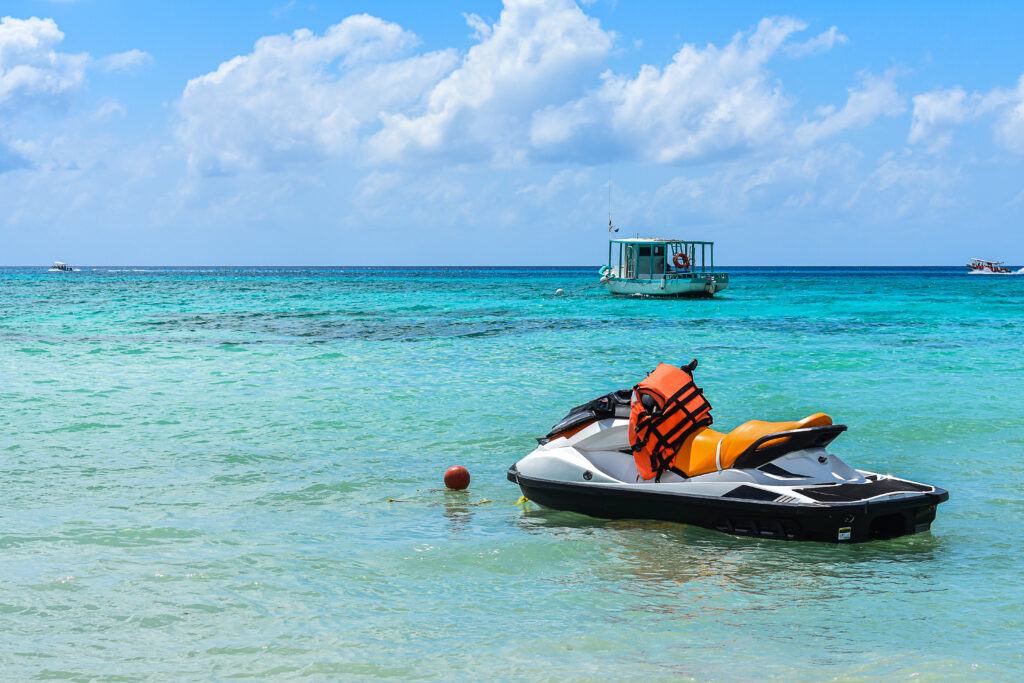
Legal Considerations
The U.S. Coast Guard “Navigation Rules” classify fishing vessels actively engaged in fishing (deploying gear that restricts maneuverability) as having special rights-of-way over power-driven recreational vessels. That means:
- You must yield to fishing boats using nets, lines, or trawls that limit their steering
- You must avoid disturbing their path or gear
- You must keep a safe distance at all times
Even if you’re in a hurry or believe you have room, cutting across their bow or running parallel too closely can be considered negligent under federal rules. For more information, you can review the USCG Navigation Rules for vessel responsibilities.
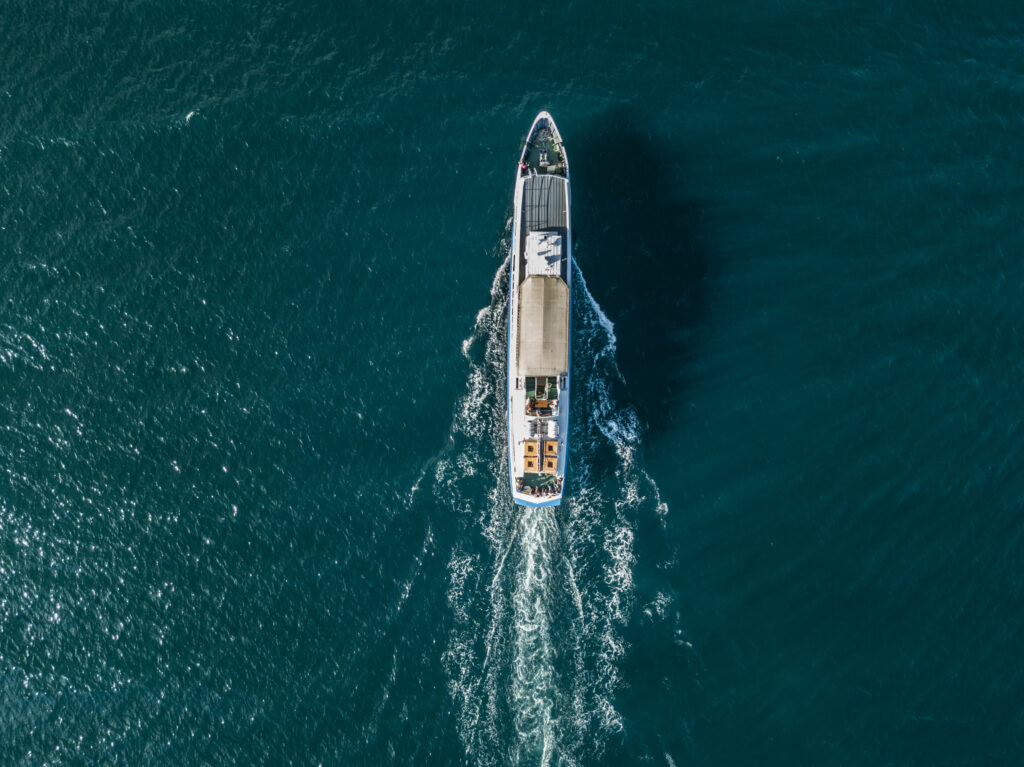
Why Respecting Fishing Boats Matters
Beyond safety and legality, showing respect on the water is simply part of being a good boater. Fishing often requires patience, timing, and quiet conditions. A poorly timed pass with a loud wake can ruin an entire setup, scare away a catch, or even cause the boat to drift off a productive fishing spot.
Seasoned boaters often form unspoken bonds on the water—nodding as they pass, slowing for each other, and communicating clearly. That mutual respect keeps waterways safe and enjoyable for everyone.
Safety Tips to Keep in Mind
If you’re still wondering how should you pass a fishing boat in specific real-world scenarios, these practical tips can help:
- Slow to no-wake speed anytime you’re within 100 feet of a vessel at rest or trolling
- Watch the water for buoys, lines, or gear floating nearby—especially crab pots or marker floats
- Maintain a lookout and keep conversations or music low when passing close
- Avoid excessive noise—some fish species are easily spooked by loud engines or stereos
- Do not cross between a boat and their fishing gear if you see lines trailing
Each body of water has different customs, so observing local behavior and being alert goes a long way.
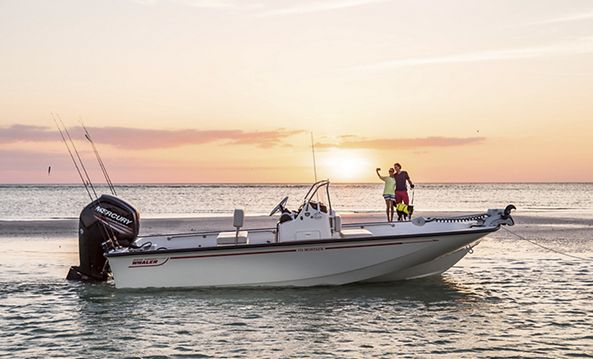
When Passing Isn’t Safe
Sometimes, the safest thing to do is wait. If a fishing boat is surrounded by other vessels or floating gear, or if visibility is limited due to fog, sun glare, or narrow waterways, it’s best to reduce speed, keep your distance, and pass only when it’s clearly safe.
Don’t force a pass. If you’re ever unsure, signal your presence with your horn and wait for a response or wave. Safety always comes before speed.
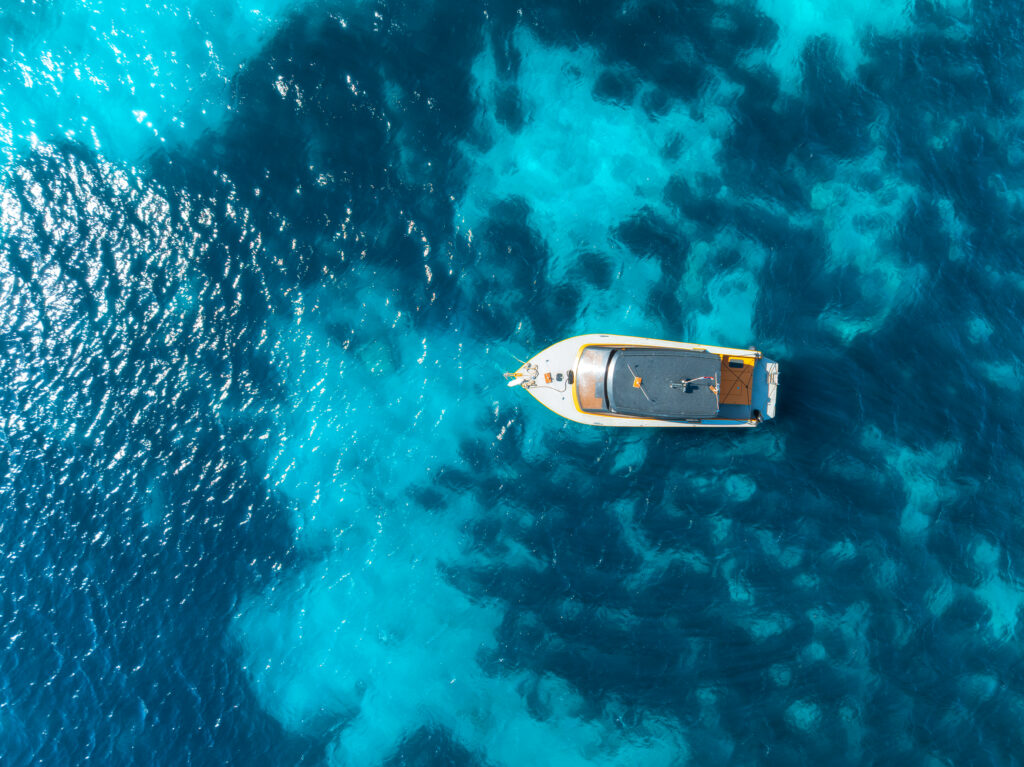
Our Role in Promoting Responsible Boating
At Float Finance, we don’t just help people finance boats—we support the entire lifestyle that comes with responsible boat ownership. Knowing how should you pass a fishing boat is just one part of being a safe, courteous operator on the water.
We work with first-time buyers and seasoned captains alike to make sure that every boat we help finance fits your experience level and intended use. That includes explaining the basics of seamanship, navigation rules, and even how marina or insurance policies are affected by boating conduct.
If you’re in the market for a fishing boat, a family cruiser, or anything in between, our boat financing solutions can help you find the right terms and navigate the purchase with confidence.

Conclusion
So, how should you pass a fishing boat? With caution, courtesy, and clear communication. Every boat on the water deserves respect—but fishing boats require particular care due to their gear, limited mobility, and the quiet conditions anglers need to succeed.
Passing too fast, too close, or without signaling can damage equipment, strain relationships on the water, or even result in a citation. Instead, follow the port-to-port passing standard, slow your speed, minimize your wake, and observe all local and federal boating laws.
At Float Finance, we’re proud to help people not just buy boats—but become better boaters in the process. Because when everyone shares the water responsibly, the whole community benefits.
